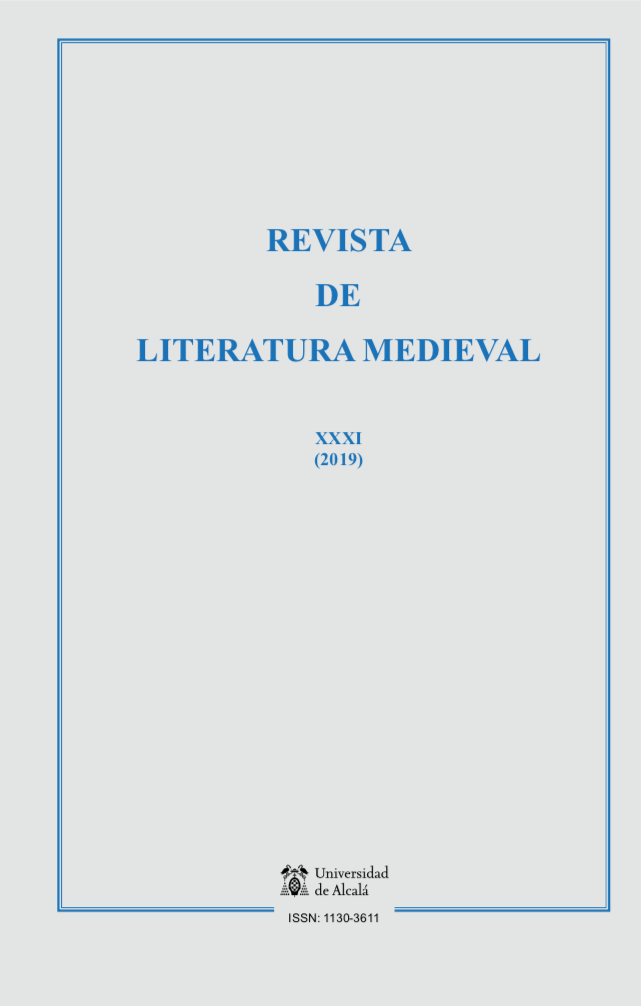De grant mal amaladis and the hidden pastorella in Aucassin and Nicolette: a proposal for dating the chantefable
DOI:
https://doi.org/10.37536/RLM.2019.31.0.64728Keywords:
Dating of Aucassin et Nicolette, Parody, Intertextuality, Genre pastorella, Adam de la Halle’s Jeu de la FeuilléeAbstract
The anonymous chantefable Aucassin et Nicolette, based on parody, has a controversial dating. However the presence of the l’autrier—that identifyes the genre of pastorella—and a series of erotic allusions authorize us to read again the chap. XI, and in particular v. 21 which reproduces the v. 12 of the prologue, confirming the centrality of the scene represented, in connection both with the lyric of the red cat of William IX, and with the Marcabruno’s most important pastorella, connected to it. Not only that, but the lexical analysis of another word in the same chapter allows us to grasp a further intertextual game with Adam de la Halle’s Jeu de la Feuillée, which provides 1276 as a terminus post quem for the chantefable dating and to place its composition in the bourgeois environment of Arras, of which it shares the social and cultural needs declined through the use of parody.
Downloads
Métricas alternativas
Downloads
Additional Files
Published
How to Cite
Issue
Section
License
The opinions and facts stated in each article are the exclusive responsability of the authors. The University of Alcalá is not responsible in any case for the credibility and aunthenticity of the studies.
Authors will retain the rights on their work, even if they will be granting the journal a non-exclusive right of use to reproduce, edit, distribute, publicly communicate and show their work. Therefore, authors are free to enter into additional, independent contracts for non-exclusive distribution of the works published in this journal (such as uploading them to an institutional repository or publishing them in a book), as long as the fact that the manuscripts were first published in this journal is acknowledged.
Works are published under the terms stipulated in the Attribution-NonCommercial-ShareAlike 4.0 International License (CC BY-NC-SA 4.0) that allows third parties to share the work under the following conditions:
Attribution — You must give appropriate credit, provide a link to the license, and indicate if changes were made. You may do so in any reasonable manner, but not in any way that suggests the licensor endorses you or your use.
NonCommercial — You may not use the material for commercial purposes.
ShareAlike — If you remix, transform, or build upon the material, you must distribute your contributions under the same license as the original.









